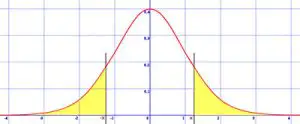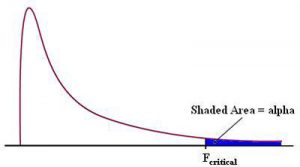F Test Example – A More Practical Insight
If you are studying statistics at school, you probably already heard about the F test. But what is the F test exactly?
Simply put, the F test is a general name that is given to all the tests that need to use the F-distribution. So, when you hear someone talking about the F test, they are probably referring to the F test that serves to compare two variances. Nevertheless, the F test can be used in a wide variety of tests.
Check the best online stat tables.

While you may have some questions about the F test and how to determine its value, we believe that before we show you an f test example, we should define the F test better.
When Should You Use An F Test?
There are two different occasions on which you should an F test. These include:
– When you need to compare the variability of a new method versus an old method
– When you want to compare the two different variances that you got when you used a t test.
F Test Assumptions
There are a couple of assumptions that you need to know about when you want to perform an F test. The truth is that in order to perform this kind of test, you need to ensure that the population is approximately normally distributed.

In addition, you also need to ensure that the samples are independent events. Besides all this, you also need to bear in mind that:
– In case you are given standard deviations to make the calculations, you need to square them in order to get the variances,
– The larger variance should always be in the numerator so that the result is a positive one. This ensures that the calculations are easier to make.
– In case the degrees of freedom you need aren’t listed in the F table, you should use the critical value that is larger to avoid any errors.
– In case you are performing two-tailed tests, you need to ensure that you divide alpha by 2 before you calculate the right critical value.
F Test Example:
Now that you already know the assumptions and the factors that you need to keep in mind when you need to do an f test, it’s time to show you a practical f test example.
In this F test example, we will be comparing two variances by hand.
Step #1: If you were given standard deviations, you need to ensure that you square them to get the respective variances.
So, let’s say that you have the following standard deviations:
σ1 = 9.6
σ2 = 10.9

In order to know the variances (s1 and s2), you will need to:
s1 = 9.6^2 = 92.16
s2 = 10.9^2 = 118.81
Use our critical F value calculator to confirm your results.
Step #2: Now, it’s time to divide the variances to get the F value. As we already told you, you need to use the higher variance number on the numerator and divide it by the smallest variance.
So, supposing that you have:
s1 = 2.5
s2 = 9.4
F = s2 / s1 = 9.4 / 2.5 = 3.76
Step #3: In this step, you will find the degrees of freedom. In case you don’t know, the degrees of freedom is equal to the size of your sample minus 1. Since we have two samples (variance 1 and variance 2), this means that you have two degrees of freedom – one for the numerator and the other one for the denominator.
Take a look at our Confidence Interval Calculator for the Population Mean.
Step #4: It’s now time to take a look at the F table and look for the F value that you calculated.
Step #5: Finally, it’s time to withdraw conclusions from our F test example. In this step, you will need to compare the value that you calculated on step 2 ( F = 3.76 ) with the table F value that you discovered in the previous step.
If the table F value is smaller than the value you calculated, then you can say that you reject the null hypothesis.